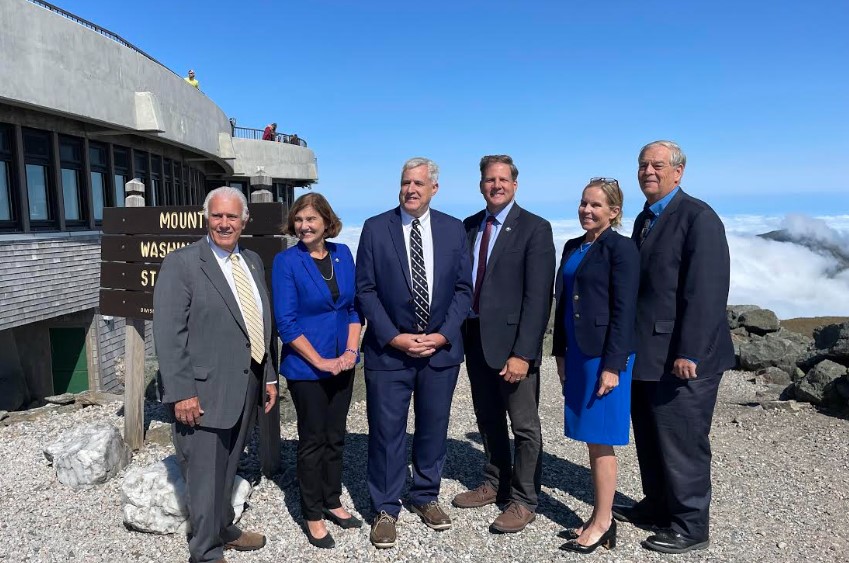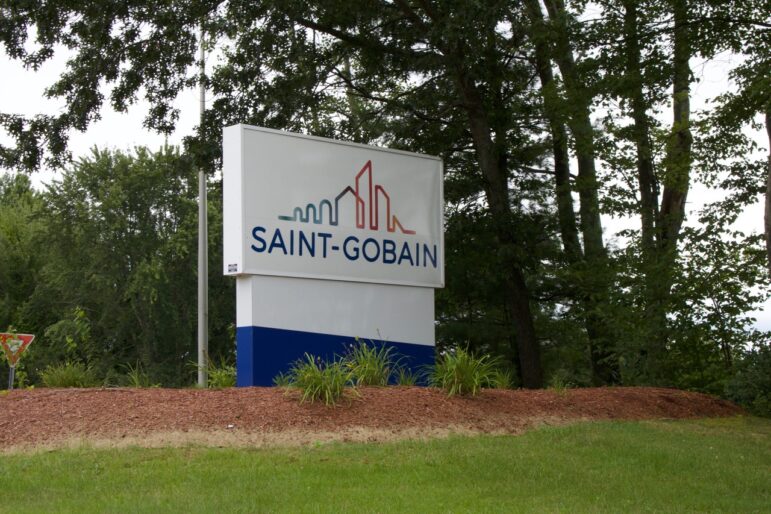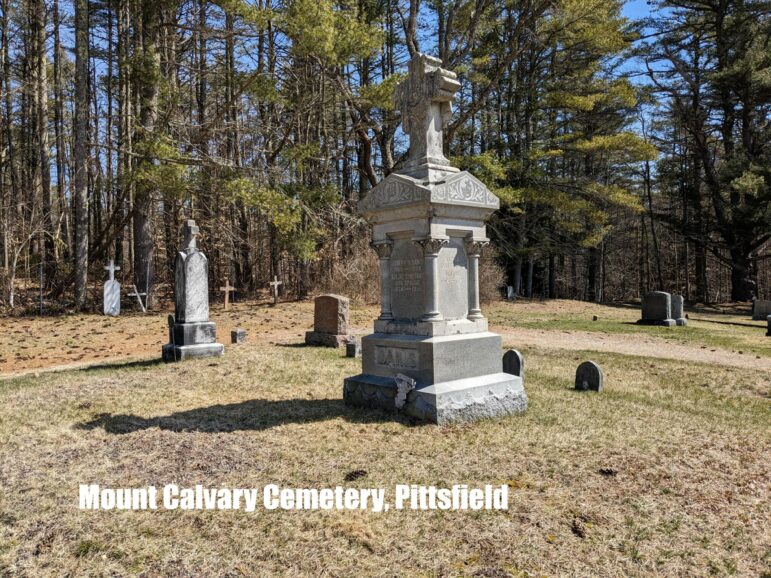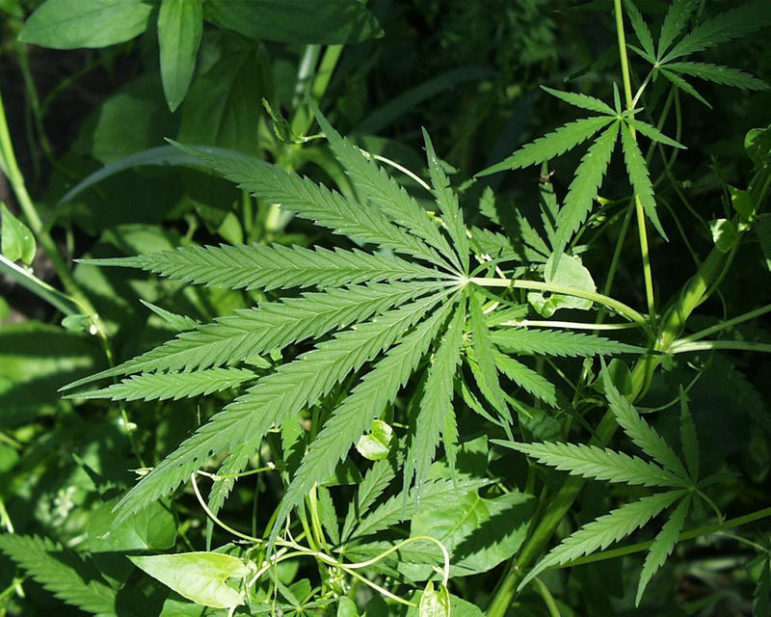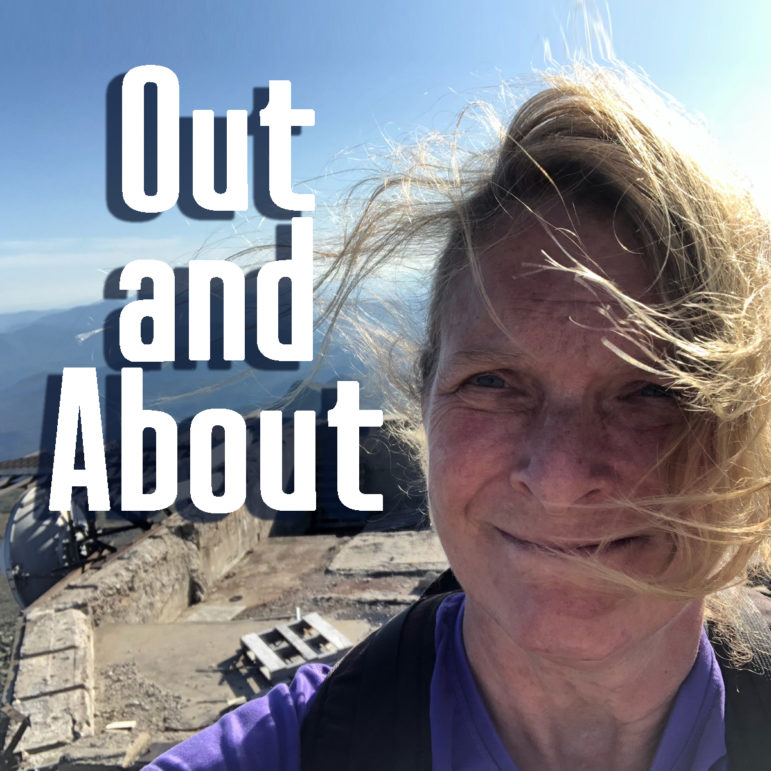
By PAULA TRACY, InDepthNH.org
The North Country’s Executive Councilor Joe Kenney maintains that the Governor and Executive Council did in fact make history by holding its first meeting atop Mount Washington last month despite questions raised later by two retired journalists.
All five councilors get to choose a meeting place in the district they represent during the summer. And Kenney, R-Wakefield, picked the Governor Adams Building at the summit for the Sept. 7 meeting.
The two retired reporters believe there were other meetings atop the rock pile over the years, including one in 1932.
The Associated Press’s longtime journalist Adolphe Bernotas was the first to challenge Kenney’s assertion when he read the headline of the Sept. 7 meeting on InDepthNH.org: Governor and Executive Council Make History Atop Mount Washington. https://indepthnh.org/2022/09/07/governor-and-executive-council-make-history-atop-mount-washington/
Then came Tim Lewis, a former Vermont State House journalist with a bit of interesting history he dug up.
Lewis was at the Mount Washington Commission meeting in North Conway this summer where a new master plan for the summit was being discussed in a public hearing.
He reached out to me by email after both meetings, which I also attended.
“I’m doing a crowd-sourced history of the MWCR through the eyes and lives of its employees. My dad ran steam trains there for 18 summers,” Lewis wrote.
“My research is at CoggersOfMtWashingtonNH.org. Part of my research involves an aggregated timeline of news articles over the years.”
He said the council met on top of mountain in July 1932.
But Kenney insists that was not a publicly posted regular meeting of the council.
He sent along a copy of the Littleton Courier Article for July 7, 1932 headlined: “Governor Winant and Council Guests on Washington: Present For Formal Opening of Mount Washington Club Saturday Night.”
The article states: “The Mount Washington Club, at the top of New Hampshire’s highest peak, was formally opened Saturday night (7/2) by Governor John G. Winant, who with Mrs. Winant, four of his executive council and 25 state officials and other guests, made the ascent on a special train late in the afternoon, in order to be present at the celebration.
“It was planned to have a huge bonfire and fireworks but due to the low hanging clouds, this feature was cancelled. The arrival of the special train at the summit was signalized by the pealing of the famous ‘Sunrise Bell,’ after which the party was served an informal dinner as guests of Myron E. Witham, president of the new Mount Washington Club.
“Following the dinner Governor Winant presented Colonel Teague a specially struck of bronze medal in commemoration of the 200th anniversary of George Washington for whom the grand old peak is named.
“Following an informal dinner Governor Winant called a special meeting of his council, the first ever held under such unique surroundings. The business transacted was restricted to consideration and approval of recent recommendations of Commissioner F. E. Everett of the Highway department.”
Then again in August 1961 the Courier had an article, “Gov, Council on Summit: “The business of the state government of New Hampshire was carried on Tuesday (8/15) at the top of Mt. Washington by Governor Wesley Powell and his Executive Council. The unusual setting was in the Summit House and the meeting was part of the year-long celebration of the 100th anniversary of the famed carriage road up New England’s highest peak. The last time a Governor and Council met at the summit was nearly two decades ago in the term of Gov. John G. Winant. Favored by excellent weather, the group arrived at the top by mid-morning and went into a business session in the lobby of the Summit House while curious tourists looked on.
“At noon Governor Powell’s party, members of the sponsoring Mt. Washington Carriage Road Centennial committee, and representatives of the press and radio were guests of Col. And Mrs. Arthur Teague, of the Mt. Washington Cog Railway, at a steak luncheon. This was followed by a tour of the summit area, a radio broadcast, and a telecast from the nearby facilities of Mt. Washington TV. The descent was made via the Cog Railway.”
Lewis said his research shows they went again in 1963 as part of a two-day examination of New Hampshire tourist facilities. In 1965 another trip – “Mountain Musing: Featured in this issue of The Courier is pictorial coverage of a tour of state-operated White Mountain attractions featuring Gov. John W. King and his Executive Council.”
“The party, accompanied by members of the press and including several state officials, boarded a Flume bus at Concord and before the day was done had enjoyed a coffee break at the Cannon Mt. Aerial Tram-way, visited the Forest Lake State Park, participated in the dedication of the Mt. Prospect State Park now known as ‘Weeks State Park,’ rode to the top of Mt. Washington on the Auto Road as guests of the Mount Washington Summit Road Co., saw the unveiling of a plaque at the Summit House attesting to the state’s purchase of the Summit as the ‘Mount Washington State Park’ to preserve and develop its unique scenic, scientific, historical and recreational features for public use and enjoyment, and then continued their swing through the region by riding over popular Kancamagus Highway to Lincoln and dinner at the Jack O’Lantern Resort before returning to Concord.
“On Mt. Washington, the Governor and Council enjoyed a tour of the Summit House and Tip Top House conducted by Col. Arthur N. Teague, owner of the Cog Railway, and Wallace Howell of Lexington, Mass., president of the Mt. Washington Observatory and known as the ‘Rainmaker.’
“Gov. King said he would name a special study committee in an effort to determine how the state can best develop the summit area to further enhance Mt. Washington as perhaps the greatest single natural landmark in the East,” it read on Aug. 12, 1964.
Lewis’ email said, “I don’t want to go too deep here other than to say I’ve scraped together a lot of information about the Cog and the Mountain over the last seven years along with identifying over 2,800 railroad employees from 1866 to the present that might be useful for telling this continuing story of development on Washington.”
Lewis is a former Vermont State House reporter and now a journalism professor.
“I’m not connected with the Cog. I’ve been underwriting this project as a kind of family scrapbook telling the story of the Coggers who helped raise me from 1953-1967 and give readers insight as to what goes on behind the scene at tourist operations. I also want to make the historical record of the road as accurate as possible.
Stands By First Time Meeting
Kenney said the earliest event was “ceremonial at best with Governor Winant.”
“The Governor and Council gathering in 1961 with Governor Powell appears to be ceremonial but maybe not, let’s check if any minutes exist at State Archives.
“The 1963 gathering with Governor Powell appears to be a collective tour of our state park system. I can only say, unless, NH Archives states otherwise, our meeting last Wednesday (Sept. 7) was the first official ‘public meeting’ of the Governor and Council with its agenda of 119 items and state officials on hand atop of Mount Washington in the Sherman Adams Building (this building was dedicated in 1980),” Kenney wrote.
“The latter point is undeniable, our Governor and Council meeting was the first Governor and Council public meeting in the Sherman Adams Building,” Kenney noted.
“I will ask my staff to check over at NH Archives if they know of anything more about the 1961 meeting and if there are any minutes to suggest a business meeting was held. If not, it was once again ceremonial,” he said in an email.
“As my former colleague Ray Burton would say, it is not history unless it is posted, dated and signed,” Kenney said. “Keep digging.”
Lewis was not the first former journalist to contact me after reading Kenney’s assertions.
Before his home and community in Florida were recently ravaged by Hurricane Ian, Adolphe Bernotas, the long-time Associated Press reporter in Concord, emailed me, “Not first in history. I covered a G&C meeting on the rock pile in late 1967 or early 1968. Gov. John King presided over the council.
“Memory fuzzy at age 81, but it was fall of 1967 or spring 1968. Don’t remember much about it other than some of the councilors — Jim Hayes, Phil Robertson, Fred Fletcher and Royal Edgerly, my first council when I got to AP in March of 1967. Could have had something to do with the crash of Cog railway that happened in the fall of 1967. I was among the first reporters up there for the crash that killed several tourists,” Bernotas wrote.
King did go but Bernotas backtracked a bit when he found that it was the Public Utilities Commission that went up after a crash.
“Looks like I concatenated the PUC and G&C meetings of more than 50 years ago in my mind. I definitely remember covering a meeting with Gov. King at the mountaintop, which appears to have been PUC rather than G&C. And I covered every Gov. and Council meeting in those days, especially whenever they went on road trips outside of Concord, (the Gorham meeting.)
“Apologies to all, but it shows I read your stuff, Paula…” Bernotas wrote.
On Tuesday, Bernotas told friends via email that things were getting better for him and his wife Marguerite in North Port almost two weeks after Hurricane Ian when they finally got electricity back.
For now, Kenney stands on his record of bringing the council meeting to the top of the state, though we are open to more information here at InDepthNH.org and want to be sure the record is clear.
